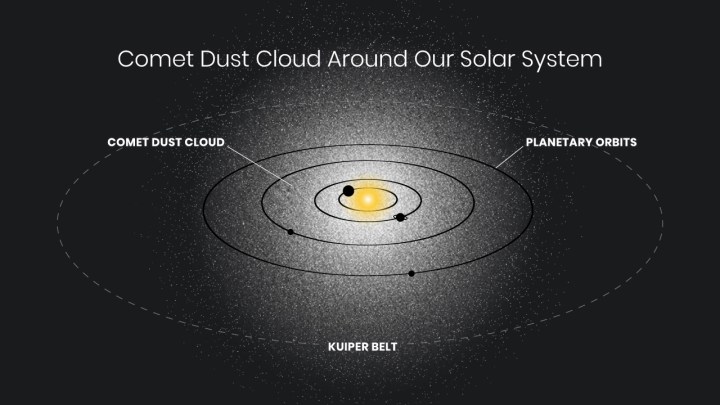Researchers using data from the Hubble Space Telescope have made a strange discovery: a “ghostly light” surrounding our solar system. When light from stars, planets, and even the glow of starlight scattered by dust is accounted for, there’s still some “extra” light observed and astronomers are trying to work out where it’s coming from.
The researchers looked at 200,000 Hubble images in a project called SKYSURF, looking for any excess of light beyond that coming from know sources. And they did find a consistent, faint glow that could suggest a previously unknown structure in our solar system. One suggestion is that there could be a sphere of dust surrounding the solar system, which reflects sunlight and causes the glow.

There’s support for this idea from the NASA New Horizon mission, which flew past Pluto in 2015 and is now heading out into interstellar space. As it traveled past the planets of the solar system and beyond, the mission did detect a faint glow of background light, though this glow wasn’t as strong as the recently found glow.
“If our analysis is correct there’s another dust component between us and the distance where New Horizons made measurements. That means this is some kind of extra light coming from inside our solar system,” said one of the researchers, Tim Carleton of Arizona State University, in a statement. “Because our measurement of residual light is higher than New Horizons we think it is a local phenomenon that is not from far outside the solar system. It may be a new element to the contents of the solar system that has been hypothesized but not quantitatively measured until now.”
The source of this hypothetical dust cloud is comets. These lumps of rock and ice pass through the solar system from all different directions, and as they approach the sun they heat up and give off dust and ice particles. That could explain why there is a sphere of dust, which has remained hidden until now because it needed very large amounts of images from a highly sensitive tool like Hubble to observe.
The research is published in three papers in The Astronomical Journal and The Astrophysical Journal Letters.



